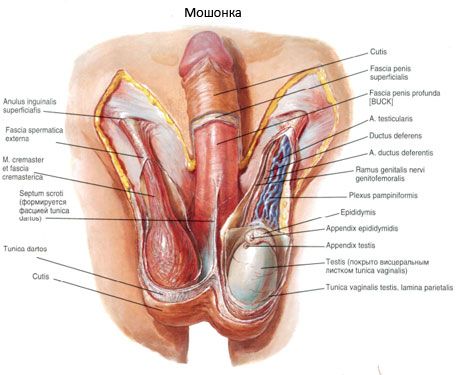Inguinal canal
Last reviewed: 23.04.2024

All iLive content is medically reviewed or fact checked to ensure as much factual accuracy as possible.
We have strict sourcing guidelines and only link to reputable media sites, academic research institutions and, whenever possible, medically peer reviewed studies. Note that the numbers in parentheses ([1], [2], etc.) are clickable links to these studies.
If you feel that any of our content is inaccurate, out-of-date, or otherwise questionable, please select it and press Ctrl + Enter.
The inguinal canal (canalis inguinalis) is an obliquely slotted gap between the lower edges of the broad muscles, the transverse fascia and the inguinal ligament, in which the men have a seminal cord, and the women have a round ligament of the uterus. The inguinal canal is located above the medial half of the inguinal cord, its length is 4-5 cm. It passes in the thickness of the anterior abdominal wall (at its lower border) from the deep inguinal ring formed by the invagination of the transverse fascia above the middle of the inguinal ligament to the superficial inguinal ring. The superficial inguinal ring is located above the upper branch of the pubic bone, between the lateral and medial legs of the aponeurosis of the outer oblique abdominal muscle.
The inguinal canal is divided into four walls: the front, the back, the upper and the lower. The anterior wall of the inguinal canal is formed by the aponeurosis of the outer oblique muscle of the abdomen, the posterior by the transverse fascia, the upper one by the lower freely dangling edges of the inner oblique and transverse abdominal muscles, the lower one by the inguinal ligament.

The deep inguinal ring (annulus inguinalis profundus) from the side of the abdominal cavity has the form of a funnel-shaped depression of the transverse fascia located above the middle of the inguinal ligament. The deep inguinal ring corresponds to the location of the lateral inguinal fossa.
The superficial inguinal ring (annulus inguinalis superficialis) is located above the pubic bone. It is limited from above by the medial, from below - the lateral legs of the aponeurosis of the external oblique abdominal muscle. The lateral wall of the superficial inguinal ring is formed by transversely located interleaved fibers (fibrae intercrurales), which spread from the medial to the lateral and belong to the fascia, covering the outer oblique muscle of the abdomen from the outside. The medial wall of the superficial inguinal ring is the bent ligament (lig.reflexum) formed by the branch of the inguinal ligament and the fibers of the lateral pedicle of the above aponeurosis of the external oblique abdominal muscle.
The origin of the inguinal canal is associated with the process of lowering the testicle and the formation of the scrotum in the process of embryogenesis.
What do need to examine?
How to examine?


 [
[